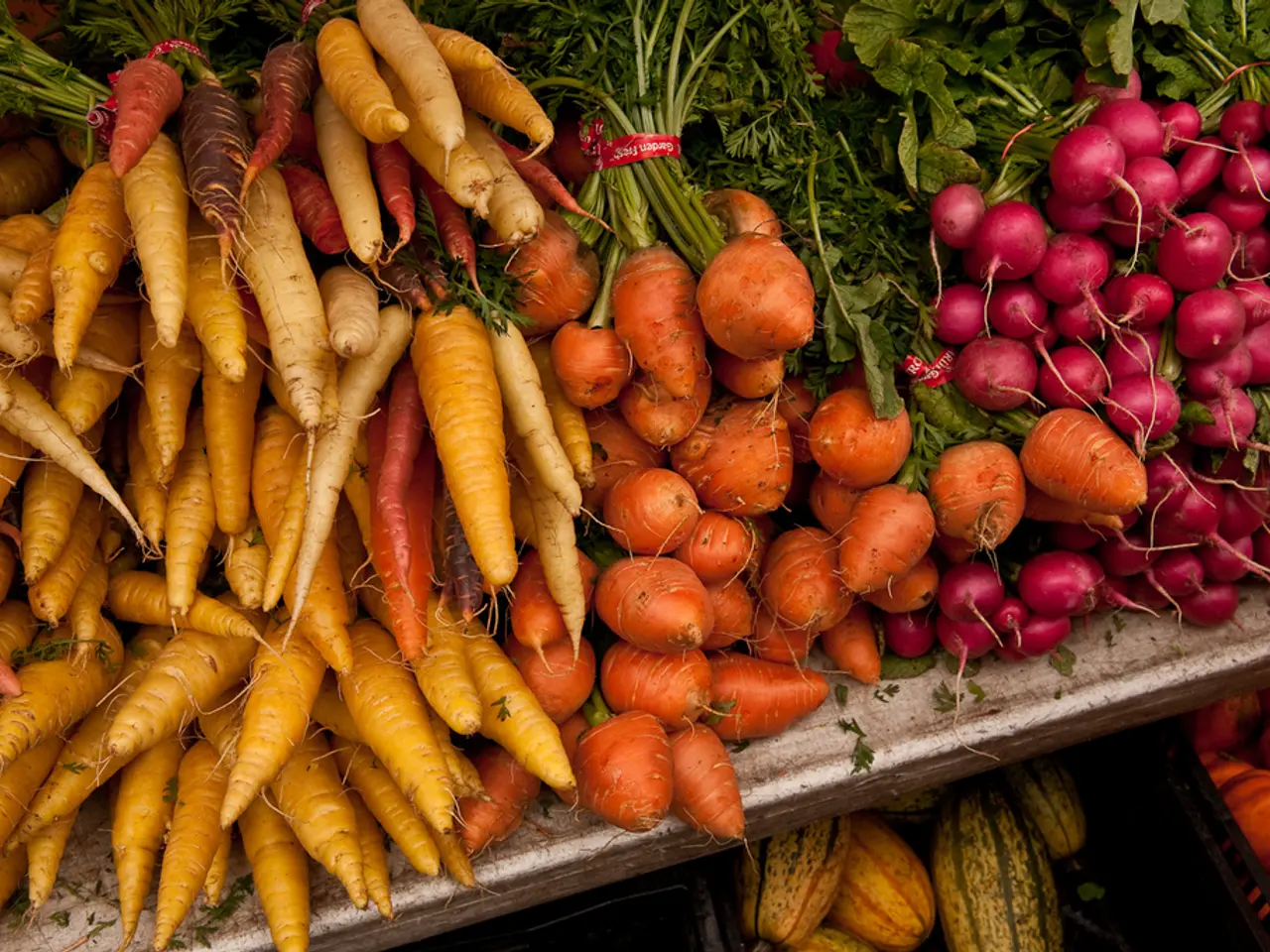Thriving Plants for Shaded Spaces: Guidelines and Strategies for Their Cultivation
Growing a Productive Shady Garden: Tips and Best Options for Partial Shade
Gardening in partial shade can be a rewarding experience, as many vegetables and herbs thrive in lower light conditions. Bush beans, for instance, can produce a crop even in vertical beds with partial shade. Here's a guide to help you grow a productive and visually appealing shady garden.
Best options for partial shade:
- Leafy vegetables: Spinach, lettuce, kale, Swiss chard, and mustard greens grow well in partial shade as they need less intense sunlight than fruiting crops.
- Root vegetables: Carrots, radishes, beets, and turnips can grow in 4-5 hours of direct sunlight, though growth may be slower and size smaller; shaded soil often results in sweeter roots.
- Legumes: While most legumes like peas and beans prefer full sun, some varieties tolerate partial shade but may produce fewer pods.
- Tomatoes: Early-maturing, determinate varieties are recommended for growing in partial shade, as they are more resilient to heat stress.
- Herbs: Shade-tolerant herbs such as mint, parsley, cilantro, and chives thrive in partial shade.
- Green onions: These are ideal for shady areas, providing a steady harvest without excessive heat.
Tips for successful cultivation in partial shade:
- Maximize available light: Position shade-tolerant crops on the brightest side of the garden, ideally with morning sun and afternoon shade to avoid heat stress.
- Patience and spacing: Expect slower growth, especially for root vegetables; space plants well to optimize light capture and air circulation.
- Soil care: Use rich, well-draining soil enriched with organic matter to support plant nutrition where light is limited.
- Moisture management: Keep soil consistently moist since shady areas may dry out less but can suffer from dampness without airflow.
- Plant smaller or plug-sized transplants: To reduce root disturbance in shaded beds, especially under trees, opt for smaller transplants.
- Focus on foliage: In shady areas, leafy greens and herbs with attractive foliage can be the visual focus since flowers may be less vibrant or abundant.
- Avoid intense heat stress: Partial shade can protect crops like brassicas (broccoli, cauliflower, Brussels sprouts) from harsh afternoon sun, improving quality.
- Add 15-25% more time to harvest: To help shade-loving plants thrive, add 15-25% more time to the estimated harvest period.
By selecting suitable crops and adapting care to reduce stress from lower light, you can achieve a productive and visually appealing shady garden. Parsley, for example, is hardy and easy to care for in shady conditions. Tatiana Novikova, a gardener, shares her experience and tips for growing crops in partial shade. Green onions provide a steady harvest in partial shade without excessive heat, while cilantro stays green longer in the shade. Basil maintains its freshness and aroma longer in partial shade as well.
In conclusion, with the right selection of crops and careful cultivation, a productive shady garden can be achieved. Embrace the challenge and enjoy the rewards of gardening in partial shade.
- Parsley, green onions, and cilantro are excellent choices for home-and-garden enthusiasts who wish to cultivate a lifestyle that includes gardening in their shady backyard, as these herbs thrive in partial shade.
- In a shady home-and-garden setup, shade-tolerant crops such as leafy vegetables (spinach, lettuce, kale, Swiss chard, mustard greens), root vegetables (carrots, radishes, beets, turnips), and legumes (early-maturing, determinate tomatoes, some varieties of peas and beans) can provide a visually appealing and productive shady garden, especially when grown with proper care and planting techniques.




